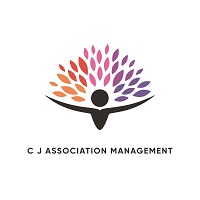At the beginning of 2020, we’d never have predicted the total overhaul of working and living that the year has delivered and no sector or lifestyle has been left unturned, which is why now, more than ever, digital marketing trends and online presence have never been more important. Digital connections and virtual meetings have been the centrepiece of most major business and personal online use, with further unprecedented reliance on online retail, conferencing and a shift in social media usage and patterns.
Google and UX
UX (user experience) has been a rising buzzword amongst digital marketers for years and is traditionally applied to website and app design to deliver seamless user journeys that keep visitors returning, interacting and transacting. However, Google has now (and characteristically) upped its game to factor ‘UX ranking’ into its algorithm to favour those sites with a higher UX score. Which means ahead of the new year, it may be worth addressing your UX on your site as part of your wider SEO strategy to make sure your page is ranking at or near the top of Google for your relevant search terms. In their report ‘Six Steps For Justifying Better UX’ Forrester cites that “For every $1 invested in UX, you get $100 in return”. So it’s definitely worth making a UX audit a priority for 2021.
Semantic Search
The way users interact with search engines is changing. The rise and rise of voice search means that when optimising your site and considering any paid search you may be investing in, your long-tailed keyword choices and SEO strategy will need to incorporate these new ways of phrasing searches.
According to Think With Google:
- There has been an 85% increase in mobile searches starting with “can I”
- There has been a 65% increase in mobile searches for “do I need”
- There has been a 65% increase in mobile searches for “should I”
Increasingly, people are treating search engine experiences, whether they are web-based, mobile, or voice-activated, as conversational. They use normal language, not Google keyword speak, which leaves it up to search engines to interpret this language, piece together meaning, and bring back the most relevant content.
Optimising for semantic search is an ongoing effort. As you plan, execute, and update your content for 2021, keep a few questions in mind. First and foremost, how and why do your users search for your content? What answers, information, content, or even experience are your target audiences likely looking for?
- Provide content that answers questions
- Write for humans – avoid keyword stuffing and consider your users as paramount
- Internal linking between content – to help keep people engaged and moving between your pages
- Topic clusters – focusing series/clusters of blogs/news items around a topic rather than a keyword
Google My Business
Despite social distancing and online retail, the demand for local search remains significant, with more than a billion people using Google Maps every month. Google has responded to this demand by releasing new features, such as posts, new service and product options, COVID-19 updates and options for black-owned businesses, and even a website builder.
This of course creates yet another opportunity to rank and access local markets and levels the playing field for smaller enterprises.
If local search is part of your digital marketing strategy, you’ll want to keep your Google My Business listing complete, detailed, and updated on an ongoing basis.
- Update service availability
- Post COVID-19 latest information
- Turn on and share you review form
- Publish your FAQs
- Share regular content (recommended – at least once a week)
Social Media
The COVID-19 pandemic has changed the face of social media usage, driving more Gen Z, Gen X and Baby Boomers online to address concerns directly related to coronavirus. With an increased time at home and more erratic and flexible working patterns, insights are beginning to emerge about how people are using social media.
- Usage is up for everybody across all channels, including Facebook
- Instagram usage is up by 40% with Instagram Live usage up by 70%
- In Q1 of 2020 100m people downloaded the Instagram app and 300m downloaded TikTok
These statistics, particular the latter, must prompt businesses to readdress which channels they are prioritising, and more importantly to ensure that their content is timely and sensitive to the evolving pandemic, with a rise in ‘cancel culture’ (the shaming en masse of companies who miss the mark or publish inappropriate content) and the unquestionable need for video and live content.
Video Marketing
We’ve reached the point where marketers cannot fallibly compete in the digital space without incorporating and prioritising video in their strategy. YouTube continues to dominate, and 2020 saw a 20-30% increase in content consumption on YouTube. Across all other key channels, video continues to rise in popularity and prevalence – namely Facebook and Instagram (with the introduction of reels) and the latest guest to the party – TikTok.
Video will also help to bolster and in fact could dominate your SEO strategy, with Google serving video content as a ‘one-click’ solution to search queries, placing your video content, if optimised correctly, at the top of the search engine results page.
Virtual Events
2020 has decimated the events industry, with the biggest beneficiary being the new face of conference calls – Zoom. With 30 times more users in April 2020 than in March and with sales anticipated to approach 2bn by the end of the year, Zoom has left Skype and Teams in its wake. For digital marketers comes the added opportunity to offer a new, instant and valuable level of content marketing, in the form of webinars, training and product assistance and demonstrations. The shift online will require those marketing departments who are usually reliant on face to face networking, events and conferences to adjust their offering to provide a suitable and effective digital equivalent.
Another New Era
Unlike no other year, 2021 will present new opportunities and challenges for marketers, particularly off the back of a disrupted and game-changing 2020. With social media interaction, however, increasing and with the rise of interactive media including video and digital conferencing, there are many accessible and exciting ways that businesses can ramp up their digital marketing efforts. However, the most important factor to consider is the ongoing shift to ‘users first’. Looking at ways to optimise content to demonstrate to Google and its counterparts how your offering addresses human problems, needs and desires.
 CJ Association Management is an established, specialist association management company providing support services tailored for the membership sector.
CJ Association Management is an established, specialist association management company providing support services tailored for the membership sector.









Leave A Comment